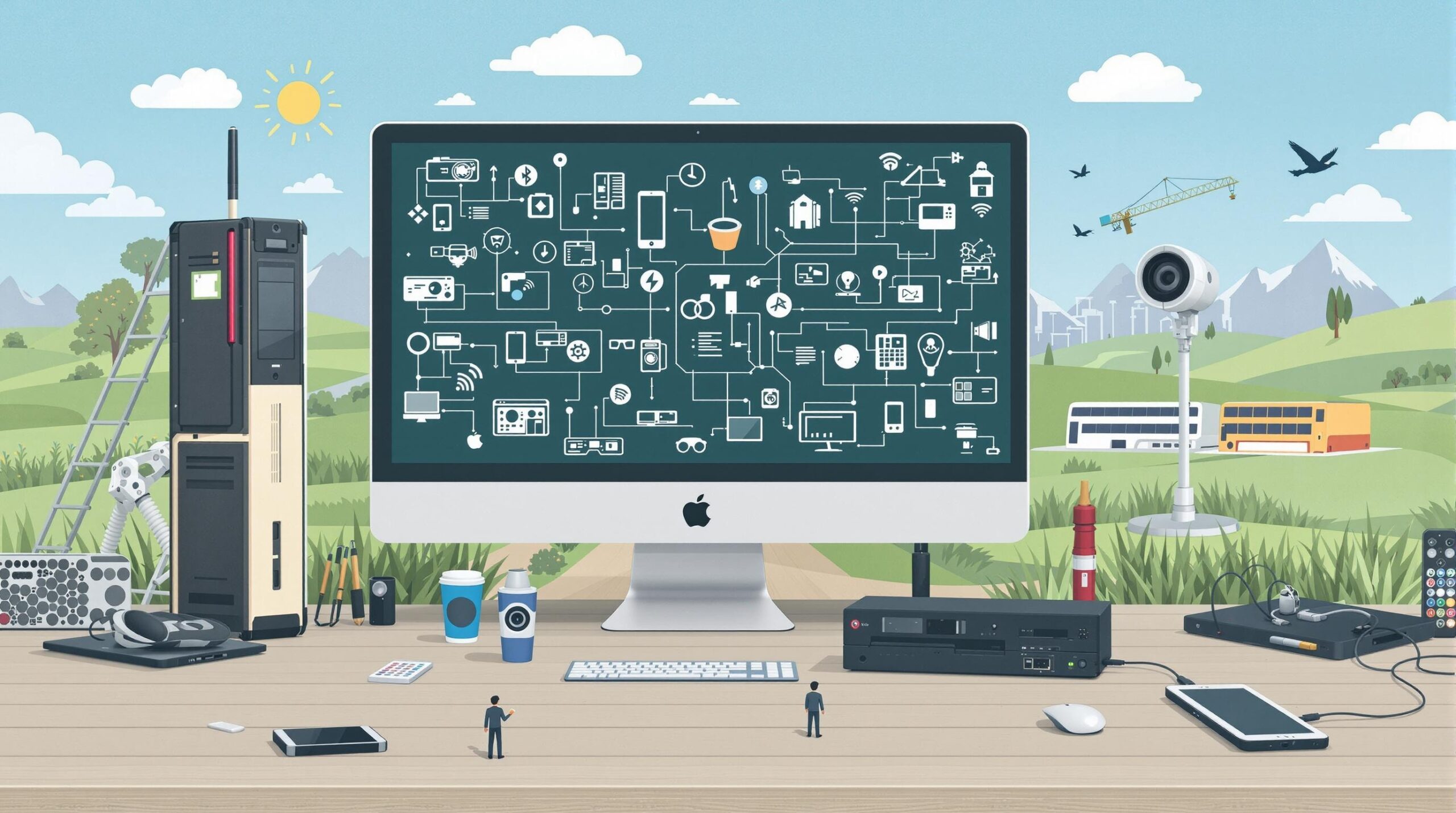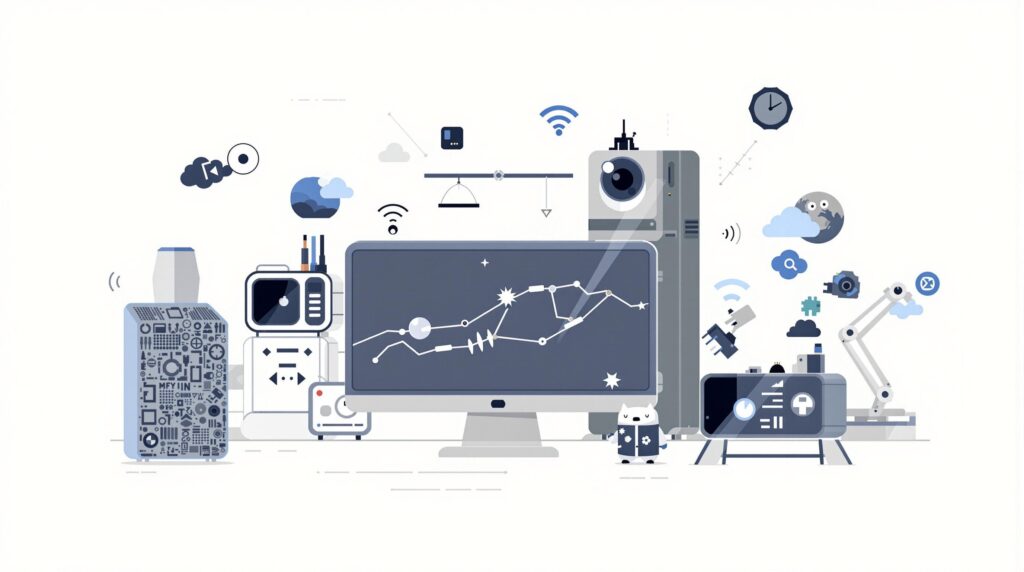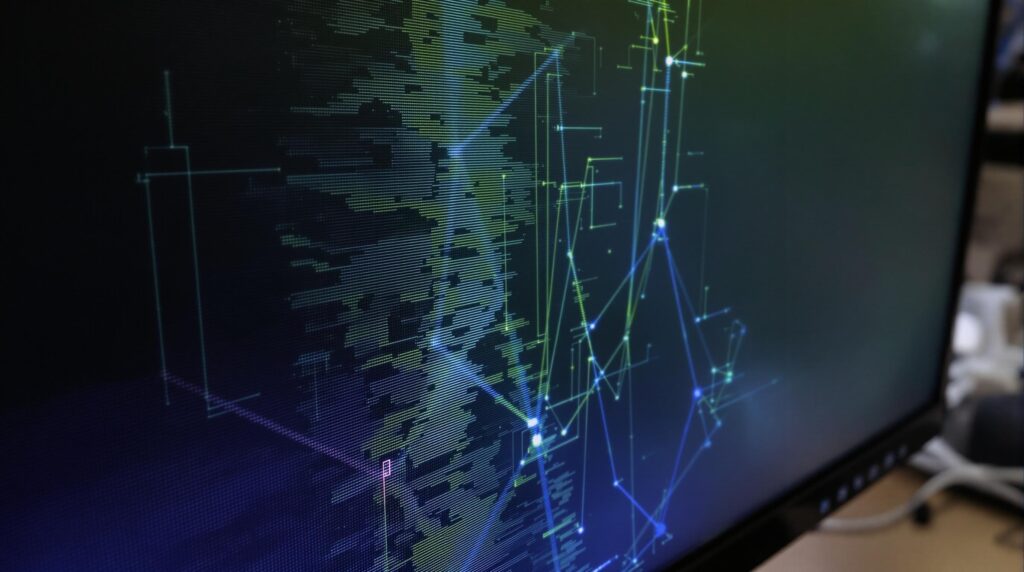As we approach 2025, the tech world is buzzing with anticipation for groundbreaking innovations that will redefine our digital experiences. From foldable displays to quantum computing advancements, the news of tech coming our way promises to transform how we interact with devices and process information in our daily lives.
Key Takeaways
- Foldable technology is expanding beyond phones to laptops and tablets with dramatic improvements in durability
- Apple’s Vision Pro 2 will introduce advanced spatial computing capabilities at a more accessible price point
- Samsung and Google are revolutionizing smartphone cameras with AI-enhanced photography features
- Practical quantum computing applications are finally emerging for specialized business and research use
- Sustainable tech is becoming mainstream with eco-friendly materials and energy-efficient designs
The Evolution of Foldable Technology
Foldable devices have come a long way since their introduction. 2025 will mark a turning point as these devices become more durable and functional than ever before. Samsung’s Galaxy Z Fold 7 is expected to feature a nearly crease-free display with improved hinge technology that can withstand over 300,000 folds—roughly equivalent to 5 years of regular use.
But phones aren’t the only devices getting the foldable treatment. Lenovo and ASUS are launching foldable laptops with flexible OLED screens that can transform from traditional clamshell designs to flat tablets. These devices will use new glass-polymer composite materials that offer significantly better scratch resistance compared to earlier generations.

What makes these new foldables truly exciting is their improved software integration. Both Android and Windows have been optimized specifically for these form factors, with intelligent UI that adapts to different fold positions and multitasking capabilities that take advantage of the expanded screen real estate.
Apple Vision Pro 2: Making Spatial Computing Mainstream
After the first-generation Vision Pro gained traction among early adopters, Apple is set to release its Vision Pro 2 in 2025 with significant improvements. The new model will maintain the high-end mixed reality experience while dropping the entry price by nearly 30%, making this innovative technology accessible to more consumers.
The headset will feature improved field of view (up to 120 degrees from the previous 100), lighter weight materials, and double the battery life. App developers have had time to create compelling spatial applications, and Apple has partnered with major content providers to deliver immersive streaming experiences that will showcase the platform’s capabilities.
Key improvements include:
- Higher resolution micro-OLED displays (3K per eye)
- Advanced hand and eye tracking for intuitive controls
- Expanded app ecosystem with over 1,000 dedicated spatial applications
- Better integration with iPhone and Mac devices
- More comfortable design for extended wear sessions
AI-Powered Smartphone Camera Revolution
Smartphone photography will take a quantum leap forward in 2025 with AI-enhanced image processing becoming the standard. Google’s Pixel 10 Pro is expected to feature a revolutionary “computational lens” system that uses machine learning to simulate optical effects previously only possible with professional camera gear.
Samsung’s Galaxy S25 Ultra will combine a massive 1-inch sensor with next-gen AI that can identify objects, optimize scenes, and even suggest composition improvements in real-time. The phone will also introduce 16K video recording capabilities with intelligent stabilization that effectively eliminates the need for gimbals in most shooting scenarios.
These AI systems don’t just improve technical aspects like exposure and color – they’re designed to understand photographic intent. For example, when capturing a portrait, the AI will recognize your subject and apply subtle enhancements that preserve natural skin tones while flattering facial features without the uncanny valley effect that plagued earlier beauty filters.
Quantum Computing Goes Practical
After years of theoretical promise, quantum computing is finally delivering practical applications in 2025. IBM’s latest quantum system achieves 1,000 qubits with significantly improved error correction, making it viable for specialized business applications in finance, logistics, and materials science.
Microsoft and Google are launching cloud-based quantum services that allow companies to experiment with quantum algorithms without needing to invest in the hardware directly. These services will initially focus on optimization problems that are particularly well-suited to quantum approaches, such as supply chain logistics and portfolio risk analysis.
While quantum computers won’t replace traditional systems for everyday tasks, they’ll work alongside them to solve specific complex problems. The hybrid computing model emerging in 2025 will allow organizations to leverage the strengths of both quantum and classical approaches.
Sustainable Tech Gains Momentum
Environmental consciousness is shaping product design across the tech industry in 2025. Dell’s new laptop line uses 100% recycled aluminum and bioplastics derived from agricultural waste, while still delivering premium performance and aesthetics.
Energy efficiency is also taking center stage with new chip designs from AMD and Intel that reduce power consumption by up to 40% compared to previous generations. This translates not only to better battery life for portable devices but also significantly lower carbon footprints for data centers and other high-performance computing applications.
Many manufacturers are adopting modular designs that allow for easier repairs and upgrades, extending device lifespans and reducing e-waste. Framework’s modular laptop concept has proven so successful that several major manufacturers are now introducing their own repairable designs with standardized components.
Next-Gen Gaming and Entertainment Devices
The gaming landscape is evolving rapidly with Sony’s PlayStation 5 Pro and Microsoft’s Xbox Series X2 promising 8K gaming capabilities and hardware-accelerated ray tracing that delivers photorealistic lighting effects. Both consoles will support variable refresh rates up to 240Hz for ultra-smooth gameplay on compatible displays.
Family gaming consoles are also getting smarter with motion detection systems that can track multiple players simultaneously for immersive party games. Nintendo’s upcoming system will reportedly include advanced haptic feedback controllers that can simulate different textures and resistances with remarkable accuracy.
Cloud gaming services are maturing with 5G and fiber internet reducing latency to nearly imperceptible levels. These services will allow even modestly-powered devices to run graphically intensive games, potentially reshaping the traditional console market in the coming years.
Health and Wellness Tech Innovations
Health monitoring technologies are becoming more comprehensive and less intrusive in 2025. Apple’s Watch Series 11 will introduce non-invasive glucose monitoring for diabetics, while Samsung’s Galaxy Ring combines fitness tracking with sleep analysis in a comfortable form factor that can be worn 24/7.
Mental wellness apps are evolving beyond simple meditation guidance to offer personalized stress management based on biometric data. These applications use heart rate variability, sleep patterns, and even voice analysis to detect early signs of anxiety or burnout and suggest appropriate interventions.
The FDA has approved several new digital therapeutics that use virtual reality and augmented reality for pain management and physical therapy. These treatments offer drug-free alternatives for chronic pain sufferers and rehabilitation patients with measurable clinical outcomes.
Smart Home Integration Gets Smarter
The fragmentation that plagued early smart home ecosystems is finally being addressed through the Matter standard, which enables seamless integration between devices from different manufacturers. This universal protocol means consumers can mix and match products without worrying about compatibility issues.
AI-powered home assistants have become sophisticated enough to understand context and conversational nuance, making interactions feel more natural. These systems can now coordinate multiple devices to create “scenes” based on verbal cues or detected activities, such as automatically adjusting lighting, temperature, and music when you sit down to read or watch a movie.
Privacy concerns are being addressed through improved moderation tools and local processing options that keep sensitive data on-device rather than sending everything to the cloud. Several manufacturers now offer smart speakers and displays that perform voice recognition and basic commands without an internet connection.
Revolutionary Display Technologies
Display technology is advancing rapidly with micro-LED screens appearing in high-end TVs and smartphones. These displays offer perfect blacks like OLED while delivering significantly higher brightness, better power efficiency, and no risk of burn-in.
Samsung and LG are perfecting transparent OLED displays that can blend into home décor when not in use, essentially disappearing into windows or glass panels. These displays maintain excellent picture quality while allowing light to pass through when showing translucent or partially transparent content.
For professionals, advanced e-ink color displays with refresh rates suitable for video are creating a new category of eye-friendly devices. These screens combine the outdoor visibility and battery efficiency of traditional e-ink with vivid color reproduction that makes them suitable for a wider range of applications.
5G Evolution and 6G Development
As 5G networks mature, we’re seeing the emergence of specialized network slicing that allocates bandwidth and prioritization based on application needs. This allows critical services like telemedicine to receive guaranteed performance even during network congestion.
Rural connectivity is improving through low-orbit satellite internet from providers like Starlink and Project Kuiper, bringing high-speed internet to previously underserved areas. These services are achieving latency comparable to traditional broadband in many scenarios.
Meanwhile, early 6G research is progressing with theoretical speeds up to 1 terabit per second and sub-millisecond latency. While commercial 6G networks aren’t expected until 2030, test facilities are already demonstrating promising results with terahertz frequency bands and advanced beamforming techniques that could eventually revolutionize wireless communication.
Conclusion
The tech landscape of 2025 promises exciting advances across multiple fronts, from practical quantum computing to sustainable design principles. These innovations aren’t just about raw performance improvements but also about creating more intuitive, accessible, and environmentally responsible technology.
As these devices and systems become more integrated into our daily lives, the focus on user experience and ethical considerations becomes increasingly important. The most successful products will be those that balance cutting-edge capabilities with thoughtful design that respects user privacy and environmental impact.
I’m particularly excited to see how these technologies will combine and interact in unexpected ways. The synergy between AI, quantum computing, and sustainable design could potentially solve some of our most pressing challenges while creating entirely new possibilities we haven’t yet imagined.



